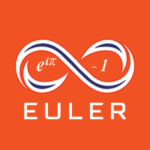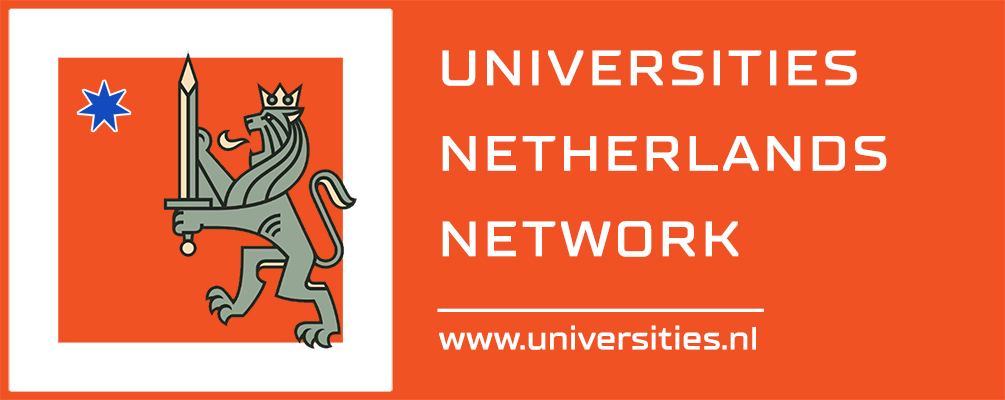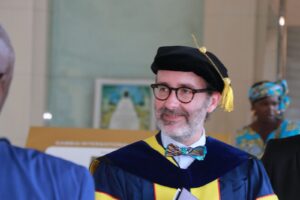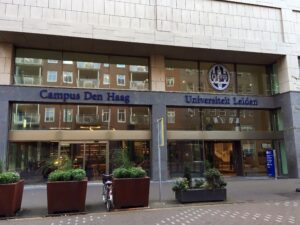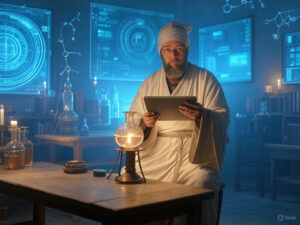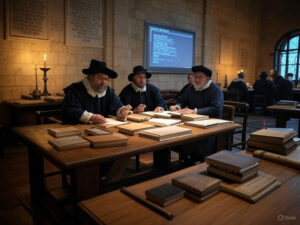Leonhard Euler (April 15, 1707–September 18, 1783) was a Swiss-born mathematician whose discoveries greatly influenced the fields of mathematics and physics. Perhaps the best-known of Euler’s findings is the Euler identity, which shows the relationship between fundamental mathematical constants and is often called the most beautiful equation in mathematics. He also introduced a notation for writing mathematical functions that are widely used today.
Fast Facts: Leonhard Euler
- Occupation: Mathematician
- Known For: The Euler identity, the function notation, and numerous other discoveries in mathematics
- Born: April 15, 1707 in Basel, Switzerland
- Died: September 18, 1783 in St. Petersburg, Russia
- Education: University of Basel
- Parents’ Names: Paulus Euler and Margaretha Brucker
- Spouse’s Name: Katharina Gsell
Early Life
Leonhard Euler was born in Basel, Switzerland. He was the first child of Protestant minister Paulus Euler and Margaretha Brucker. In 1708, one year after Euler was born, the family moved to Riehen, a suburb a few miles from Basel. Euler grew up in the parsonage at Riehen with his two younger sisters.
During Euler’s early childhood, he learned mathematics from his father, who had an interest in mathematics and had taken courses with the notable mathematician Jakob Bernoulli while studying to become a theologian. Around 1713, Euler began attending a Latin grammar school in Basel, but the school did not teach mathematics, so Euler took private lessons.
University
In 1720, Euler entered the University of Basel at just 13 years old—an accomplishment that was not uncommon for the time. At university, he studied with Johann Bernoulli, Jakob Bernoulli’s younger brother, who gave Euler mathematical problems to solve each week and encouraged him to read advanced math textbooks. Bernoulli even offered to answer Euler’s math questions every Sunday afternoon, even though he was too busy to give him private lessons.
In 1723, Euler completed a master’s degree in philosophy and began studying theology, as his parents had wanted. However, Euler was not nearly as excited about theology as he was about mathematics. He obtained his father’s permission to study mathematics instead, possibly with the help of Bernoulli.
Euler finished his studies at the University of Basel in 1726. In 1727, he submitted an entry for the Grand Prize of the Paris Academy of Sciences concerning the optimal placement of masts on a ship. The first prize winner was an expert in the mathematics of ships, but Euler, who had not seen a ship before, won second place.
Academic Career
Euler was offered an academic appointment at the Academy of Sciences in St. Petersburg, Russia. He moved there in 1727 and stayed until 1741. Although Euler’s post initially involved teaching the physics and math of physiology, he was soon appointed to the mathematics-physics division of the Academy. There, Euler advanced through different positions, becoming a professor of physics in 1730 and the senior chair in mathematics in 1733. The discoveries Euler made in St. Petersburg catapulted him to world fame.
Euler married Katharina Gsell, a painter’s daughter, in 1733. Together, the couple had 13 children, five of whom survived to adulthood.
In 1740, Euler was invited to Berlin by the Prussian king Frederick II to help establish an Academy of Sciences in the city. He moved to Berlin in 1741 and became the director of mathematics at the Academy in 1744. Euler remained prolific in Berlin, writing about 380 articles during his 25-year tenure.
Contributions to Mathematics
Some of Euler’s most notable contributions include:
- The Euler identity: eiπ + 1 = 0. The Euler identity is often called the most beautiful equation in mathematics. This formula shows the relation between five mathematical constants: e, i, π, 1, and 0. It has wide-ranging uses in mathematics and physics, including electronics.
- Mathematical function notation: f(x), where f stands for “function” and the variable of the function (here, x) is enclosed within the parentheses. This notation is widely used today.
Later Life and Death
By 1766, Euler’s relations with Frederick II had soured, and he returned to the Academy of St. Petersburg upon invitation from Empress Catherine the Great. His eyesight was in decline, and by 1771, Euler was completely blind. Despite this obstacle, however, Euler continued his work. Ultimately, he produced half of his total research while completely blind with the help of scribes and his own impressive memory and mental calculation skills.
On September 18, 1783, Euler died from a brain hemorrhage in St. Petersburg. After his death, the Academy at St. Petersburg continued publishing Euler’s prolific works for about 50 years.
Legacy
Euler made many important discoveries in the field of mathematics. While he is perhaps best known for the Euler identity, he was a prolific and accomplished mathematician whose contributions influenced graph theory, calculus, trigonometry, geometry, algebra, physics, music theory, and astronomy.
Sources
- Cajori, Florian. A History of Mathematical Notations: Two Volumes Bound as One. Dover Publications, 1993.
- Gautschi, Walter. “Leonhard Euler: His Life, the Man, and His Works.” SIAM Review, vol. 50, no. 1, pp. 3-33.
- O’Connor, J. J., and Robertson, E. F. “Leonhard Euler.” University of St. Andrews, Scotland, 1998.
- Thiele, Ruediger. “The Mathematics and Science of Leonhard Euler (1707-1783).”
Citation: Lim, Alane. “Leonhard Euler, Mathematician: His Life and Work.” ThoughtCo, Aug. 25, 2020, thoughtco.com/leonhard-euler-biography-4174374
